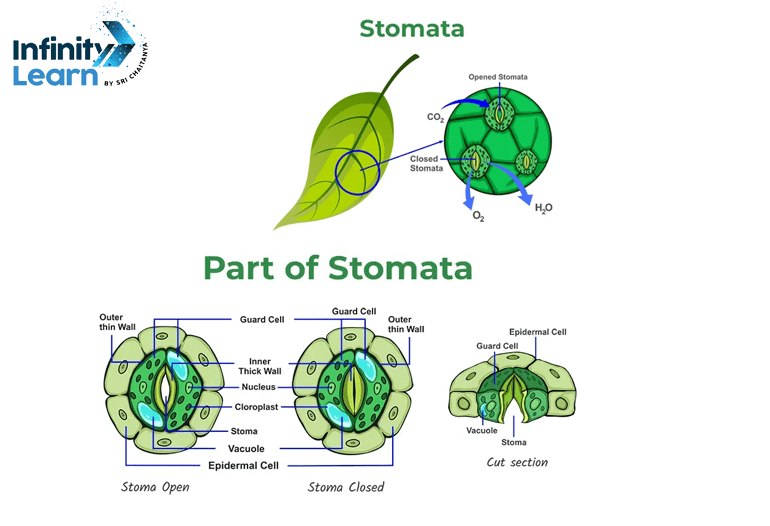
Courses

By Shailendra Singh
|
Updated on 3 Jan 2025, 18:02 IST
Stomata Diagram: All green plants have essential parts that play critical roles in various life processes. One key feature is the stomata, which are crucial for gaseous exchange. Plants use stomata as their mouths, also known as stoma or stomas.
Stomata typically exist in the epidermis of leaves, although they can also manifest on stems and other plant parts. These openings allow gases like oxygen, carbon dioxide, and water vapor to move between the inside and outside of plant tissues.
Stomata come in different types, classified based on the number and characteristics of the surrounding subsidiary cells. Below are some types of stomata. The diagram of stomata is important for students in both classes 10 and 12, frequently appearing in board exams. Below is a brief description and a well-labeled diagram of stomata for reference.
A stomata diagram is a graphical representation showing the small openings, known as stomata, which are primarily located on the underside of plant leaves. These pores are surrounded by guard cells. They play a critical role in regulating the exchange of gases. This includes carbon dioxide and oxygen, as well as water vapor.
This exchange occurs between the plant and its environment. The diagram helps in understanding the structure and function of stomata, including their involvement in processes like photosynthesis and transpiration.
Also Check: Human Brain Diagram Class 10
Introducing a well-labelled diagram of open and closed stomata provides a clear understanding of these important plant structures. Below is a diagram of stomata, clearly labeling the different cells that make up its composition.


The structure of stomata consists of tiny pores, primarily located in the epidermis of plant leaves, stems, and other organs. These pores are bordered by two specialized cells known as guard cells. These guard cells control the opening and closing of the stomatal pore, regulating the exchange of gases such as carbon dioxide, oxygen, and water vapor between the plant and its surroundings. Understanding the structure of stomata is essential for comprehending their function in plant physiology and gas exchange processes. A typical stomata comprises several distinct parts, each contributing to its function:
Stomata can be classified into five types based on the arrangement of subsidiary cells surrounding the guard cells:

Stomata, tiny pores on plant surfaces, help in gas exchange. Depicted in diagrams as small openings, they're surrounded by specialized cells like guard cells and subsidiary cells, highlighting their structure and function.
Stomata open and close through the expansion and contraction of guard cells, which regulate their aperture. When guard cells absorb water, they swell and curve, causing the stomatal pore to open. Conversely, loss of water leads to shrinkage and straightening of guard cells, resulting in stomatal closure. This mechanism helps regulate gas exchange and minimize water loss in plants.
The stomatal apparatus comprises stomata and specialized cells like guard cells, subsidiary cells, and epidermal cells. This arrangement regulates gas exchange (like CO2 and O2) and controls water vapor and transpiration in plants.
In the above article Infinity learn has provided a diagram with labels indicating key components such as guard cells, subsidiary cells, and stomatal pore, demonstrating the structure of stomata.